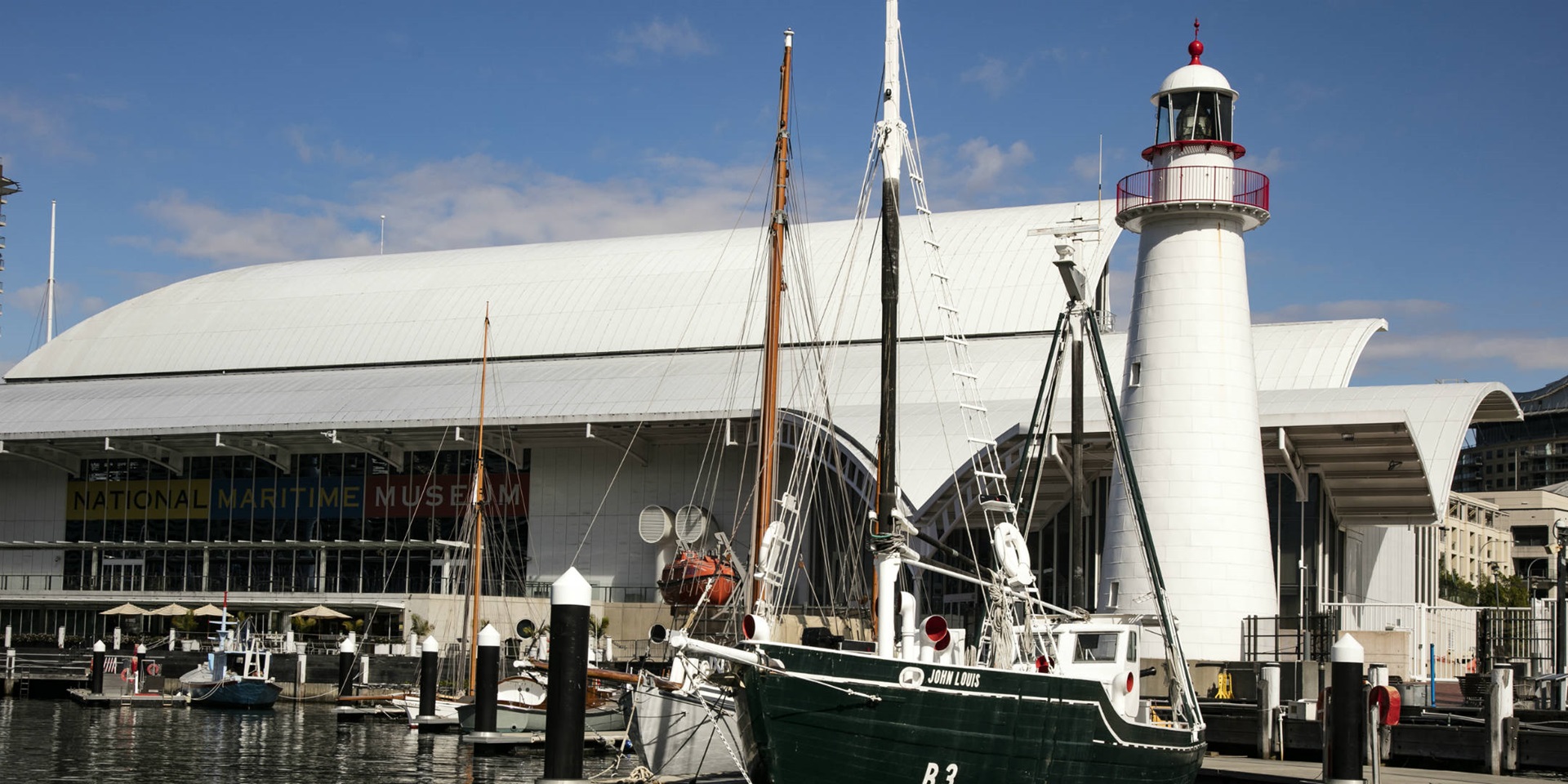
A lighthouse far from home
The Australian National Maritime Museum also has its own lighthouse, now far from its original location at Cape Bowling Green, a low sandy spit 70 kilometres south of Townsville in northern Queensland, where many ships had run aground. The lighthouse was built in 1874 to assist vessels passing through the Great Barrier Reef via the Inner Route. It was one of 22 lighthouses built to the same design to aid ships serving the expanding North Queensland ports.
The lighthouse was built using local hardwood for the frame and clad with iron plates imported from Britain. It was prefabricated in Brisbane under the direction of the colonial architect, and constructed by brothers John and Jacob Rooney of Maryborough. Chance Brothers (suppliers to the lightships) supplied the original third-order dioptric rotating light and the fuel system which operated on kerosene. A clockwork mechanism rotated the light, which then had a range of 14 nautical miles.
The lighthouse was staffed by a keeper and three assistants, who lived in four cottages on the site, which was twice threatened by the sea. After only four years of operation the whole light station was moved due to beach erosion, then again in 1908 the tower was re-erected further away as the coastline changed. Gradual improvements were made to the light and mechanisms, and in 1920 it became automatic, so the staff were removed and their cottages demolished. Twin red stripes were painted around the tower to assist daytime visibility from the sea, but by 1987 the lighthouse had been replaced by a modern tower.
 An early illustration of the lighthouse, with Cleveland Bay pilot cutter 'Isabel' and the 'Diamond' steamer ashore at Cape Bowling Green. Source: ANMM
An early illustration of the lighthouse, with Cleveland Bay pilot cutter 'Isabel' and the 'Diamond' steamer ashore at Cape Bowling Green. Source: ANMM
Early in the 1990s, in a discrete operation, the lighthouse was dismantled by a small team camping onsite. Using a Department of Transport helicopter, sections were transferred to a site where they could be numbered, crated and then loaded onto a Royal Australian Navy ship to be taken to Sydney. The lighthouse was re-erected at the museum in 1994.

Drawing of Cape Bowling Green Lighthouse. David Payne, 2003
It, too, is an intriguing study of construction, and in 2003 I was lucky enough to be contracted to prepare a drawing of the lighthouse, which helps reveal the story of the design pattern inside its outer shell. It is the same classic technology of many parts, fabricated and assembled by hand, all observing the standard rules of support and bracing. The outcome has elegant proportions, and the pattern of structure created to support the tall, tapered column below the light is equally elegant and simple – a series of four tapering sections, with each divided into six identical braced panels that link to form up that section.

Cape Bowling Green Lighthouse at the Australian National Maritime Museum. Photograph by Andrew Frolows/ANMM
The four vertical sections sit within the circular shell of cladding. Each section has six vertical square posts spaced around the perimeter with beams that form a hexagonal pattern. These posts are raked to suit the taper of the overall structure. Between each pair of square columns are three equally spaced rectangular sectioned posts that ‘fill out’ the flat line of the beam between the square posts to fit the circumference of the cladding. A diagonal brace from one post across to the next braces the structure, and completes one of six identical panels. Fastened together they form a rigid section.
The shell of curved riveted plating then encloses this wooden skeleton of Queensland hardwood, which has a platform at each section joint. The light room – another elegant structure of almost identical cast-iron panels and window frames – is attached on top, and finished with a dome 22 metres above the base. An internal staircase spirals around the clockwork mechanism’s weight tower, and a ladder completes the access up through a trapdoor into the light.
Once again, it’s an example of an impressive amount of design and work put into an item of very singular use, and as with the lightships, the lighthouse had to survive in a difficult environment with limited opportunity for maintenance.
Reliable to the end, both lightships and lighthouse fulfilled their task and now serve to remind us how earlier generations used their best technology to ensure a safe passage for shipping around our coastline.
